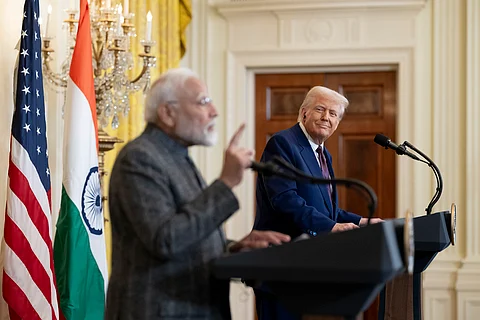U.S. Imposes 25% Tariff on India, Cites Trade and Russia Ties
U.S. President Donald Trump announced a 25% tariff on India effective August 1, alongside an additional penalty, citing high trade barriers and India’s economic ties with Russia.
The move escalates tensions amid stalled U.S.-India trade talks and reflects Trump’s broader protectionist agenda to address trade deficits.
The decision, paired with a firm Friday deadline for trade negotiations, signals a hardline stance on global commerce.
Tariff Hike and Trade Deficit Concerns
Trump’s tariff announcement targets India’s trade practices, which he described as restrictive due to high tariffs and “obnoxious non-monetary trade barriers.”
The 25% rate, slightly below the 26% imposed on “Liberation Day” in April, marks a significant jump from the 2.4% average tariff on Indian imports in recent years.
Trump emphasized the U.S.’s “massive trade deficit with India,” noting that the two nations have historically conducted limited business despite friendly relations.
India, a major source of U.S. imports with nearly $90 billion in goods last year, including $17 billion in iPhones, faces increased costs that could impact American consumers and companies.
Penalties for Russian Ties
The additional penalty stems from India’s reliance on Russian military equipment and energy purchases, which Trump criticized amid global calls for Russia to end its invasion of Ukraine.
India, alongside China, is one of Russia’s largest energy buyers, a point Trump highlighted as contrary to international efforts to curb Russian aggression.
The White House has not clarified the specifics of the penalty, leaving uncertainty about its scope and impact.
This move aligns with Trump’s recent threats of 100% secondary tariffs on countries purchasing Russian oil and gas, signaling a broader strategy to pressure nations economically tied to Russia.
Economic and Global Implications
The tariff hike comes as part of Trump’s aggressive trade policy, which economists warn could raise costs for U.S. consumers.
A Yale University Budget Lab analysis estimates current U.S. tariff rates equate to a $2,400 annual loss per household in 2025.
India’s role as a growing hub for smartphone production, particularly for Apple, underscores the potential ripple effects on global supply chains.
With no immediate response from India and trade talks ongoing, the next round of negotiations in August will be critical in determining whether tensions escalate further or a bilateral agreement can be reached.

